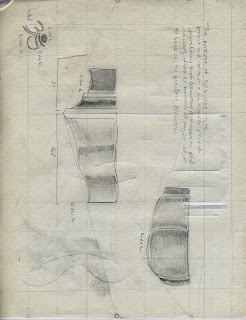
I want to introduce this post by starting off with a summary of Plato's Allegory of The Cave. I have included a claymation video adaptation of the excerpt from his manuscript The Republic.
(www.youtube.com/watch?v=69F7GhASOdM&noredirect=1)
This interpretation does a well enough job of conveying the just of the story's moral fiber, but I do highly suggest reading the actual text or finding certain scholarly examples or interpretations.
I first came across this story in my freshman year of high school. It was required as were other worldly and depressing literature ( Dante's Inferno, 1984, Night, numerous Shakespearean writings and of course the infamous Flatland). Although these are typically college level reading I do appreciate my high school's literature department on overshooting the development of our pre-frontal cortex's at the time. The Allegory of the Cave, however, began to invade my life on many levels years after that class discussion. I have found various examples and ample situations to apply these ideas of perspective and truth. One of my favorite examples of this is Rene Magritte's surrealist painting the Treachery of Images (as seen above). The interpretation of the text states that "This is not a pipe," when in fact that is correct and Plato would most certainly agree. This is NOT a pipe, it IS, however, a painting of a pipe. Which, reflecting on Plato leads us to question whether or not the actual physical object is the real pipe or, rather, the idea that furnished the making of the physical object it the real pipe. (Dramatic pause to ponder....)
I will let your mind runaway with that though on your own blog time, for now I may make one more comparison. If we were to place a photograph of a pipe next to the painting next to the real thing next to the definition next to a man in a bathrobe holding a newspaper contemplating a mid-morning smoke; who is to tell us what is the actual pipe.
To formulate a definite opinion on this matter for the sake of time and reality we will say that the actual pipe is the 'real' pipe. This is to say that the photograph is the closest most tangible interpretation we human beings can achieve. This is not to say that this photograph of the pipe is in anyway a mirror of the object.
In the text On Photography by Susan Sontag, she elaborates on the factors that may skew a photographers attempt at mirroring reality. The most basic factor is life itself. Our capacity for emotion and feeling inherently skew reality on an individual level, although it may not be warped to you in particular, Johnny Shroom over there in the corner is interpreting this photo of a pipe as a living organism breathing fire and ready to destroy the human race in its entirety. Now, I may be exaggerating the analogy, but the point is clear. Just as emotions may change the look in your eye as you walk down the street thinking your anger is going unnoticed, this outward expression is able to prevail itself in photography as well as in other artistic mediums. The moral of this story is to attempt to view, at first, objectively and to take another person's interpretation with a grain of salt (or a dash of pepper, to each his own taste) and then attempt to view the same image or object from five other perspectives to gain a holistic understanding.


































